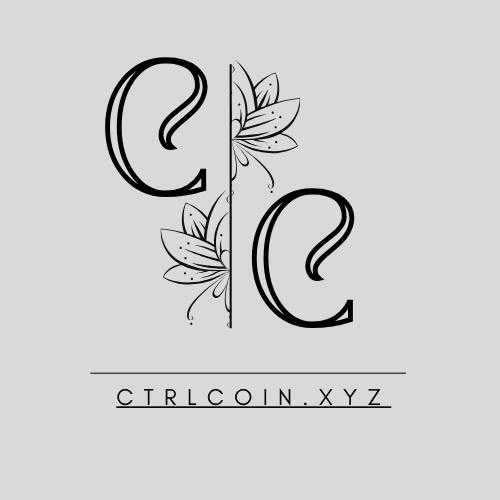Loan Types
Mortgage Loan Varieties: Understanding Different Types of Mortgage Loans
When buying a home, choosing the right type of mortgage is crucial for both short-term affordability and long-term financial health. Different types of mortgage loans cater to various financial situations, offering flexibility in interest rates, loan terms, and down payment requirements. Understanding these options can help you make an informed decision that best fits your needs and financial goals. Here’s a guide to the most common types of mortgage loans and what you need to know about each.
1. Conventional Mortgage Loans
A conventional mortgage is a home loan that is not insured or guaranteed by a government agency. These loans are the most common type of mortgage and are typically offered by private lenders, such as banks or mortgage companies.
Key Features:
- Down Payment: Conventional loans generally require a higher down payment, typically around 20%, but some lenders offer conventional loans with as little as 3% down.
- Credit Requirements: Borrowers typically need a good credit score (usually 620 or higher) to qualify.
- Loan Limits: Conventional loans have loan limits set by the Federal Housing Finance Agency (FHFA). For 2024, the conforming loan limit is $726,200 for most areas, but higher in more expensive markets.
- Private Mortgage Insurance (PMI): If your down payment is less than 20%, you may be required to pay for PMI, which protects the lender if you default on the loan.
Best For: Borrowers with good credit and a stable income who can make a significant down payment.
2. FHA Loans
FHA loans are insured by the Federal Housing Administration (FHA) and are designed to help low-to-moderate-income borrowers, especially first-time homebuyers, qualify for a mortgage.
Key Features:
- Down Payment: FHA loans allow for lower down payments, typically as low as 3.5% of the home’s purchase price.
- Credit Requirements: FHA loans have more lenient credit score requirements. Borrowers with credit scores as low as 580 can qualify for the 3.5% down payment option, and scores between 500-579 may still qualify with a 10% down payment.
- Mortgage Insurance: FHA loans require both an upfront mortgage insurance premium (MIP) and annual mortgage insurance (paid monthly). The MIP helps protect the lender if the borrower defaults.
- Loan Limits: FHA loans have maximum loan limits that vary by county, with higher limits in areas with higher housing costs.
Best For: First-time homebuyers or those with lower credit scores or smaller down payments.
3. VA Loans
VA loans are backed by the U.S. Department of Veterans Affairs (VA) and are available to eligible military service members, veterans, and their families. These loans offer significant advantages, especially in terms of down payments and interest rates.
Key Features:
- No Down Payment: VA loans do not require a down payment, making them a very attractive option for eligible borrowers.
- No Mortgage Insurance: Unlike FHA or conventional loans, VA loans do not require private mortgage insurance (PMI), which can save borrowers a substantial amount each month.
- Credit Requirements: VA loans typically have more flexible credit requirements, though most lenders will expect a minimum credit score of 620.
- VA Funding Fee: Instead of mortgage insurance, VA loans come with a one-time funding fee, which helps cover the costs of the program. This fee can be rolled into the loan.
Best For: Active-duty service members, veterans, and their families who want a mortgage with no down payment and no mortgage insurance.
4. USDA Loans
USDA loans, backed by the U.S. Department of Agriculture, are designed to help low- to moderate-income borrowers purchase homes in rural areas. These loans offer affordable financing options for eligible buyers.
Key Features:
- No Down Payment: Like VA loans, USDA loans offer 100% financing, meaning no down payment is required.
- Income Limits: To qualify, borrowers must meet income limits set by the USDA, which are based on the median income for the area.
- Rural Property Requirement: The home must be located in an eligible rural area as defined by the USDA.
- Mortgage Insurance: USDA loans have an upfront guarantee fee and an annual fee (similar to mortgage insurance) that is typically lower than FHA loan insurance rates.
Best For: Borrowers with moderate incomes looking to buy homes in rural or suburban areas with no down payment.
5. Jumbo Loans
A jumbo loan is a type of mortgage that exceeds the loan limits set by the FHFA. These loans are used to finance luxury properties or homes in highly competitive real estate markets.
Key Features:
- Loan Amounts: Jumbo loans are for homes that cost more than the conforming loan limit ($726,200 in most areas for 2024). In high-cost areas, the limit is higher.
- Down Payment: Jumbo loans typically require a larger down payment, often 10% to 20%.
- Credit Requirements: Borrowers typically need excellent credit (a score of 700 or higher) to qualify for a jumbo loan.
- Higher Interest Rates: Jumbo loans often come with slightly higher interest rates due to the increased risk for lenders.
Best For: High-income borrowers looking to purchase expensive homes that exceed the conforming loan limit.
6. Adjustable-Rate Mortgages (ARMs)
An adjustable-rate mortgage (ARM) has an interest rate that changes periodically based on market conditions. These loans typically start with a fixed rate for a set period, after which the rate adjusts at regular intervals.
Key Features:
- Initial Fixed-Rate Period: ARMs often start with a low fixed interest rate for an initial period (such as 3, 5, 7, or 10 years), after which the rate adjusts annually based on the loan’s index.
- Rate Adjustments: After the fixed period, the interest rate adjusts up or down based on market conditions, which can lead to higher or lower monthly payments.
- Caps on Increases: Most ARMs have caps that limit how much the interest rate can increase during each adjustment and over the life of the loan.
Best For: Borrowers who plan to sell or refinance before the end of the fixed-rate period or those comfortable with the potential for fluctuating monthly payments.
7. Interest-Only Mortgages
With an interest-only mortgage, borrowers are required to pay only the interest on the loan for a specified period (typically 5-10 years). After the interest-only period ends, the borrower begins paying both principal and interest.
Key Features:
- Lower Initial Payments: During the interest-only period, monthly payments are lower because they only cover interest. This can provide short-term cash flow flexibility.
- Higher Payments Later: Once the interest-only period ends, monthly payments increase as the borrower must start paying down the loan principal.
- Higher Risk: Because you’re not reducing the loan principal during the interest-only period, you may end up with a large balance that must be paid off or refinanced.
Best For: Investors or borrowers who expect significant income increases in the future or those who plan to sell the property before the principal payments begin.
8. Balloon Mortgages
A balloon mortgage is a short-term loan with relatively low payments for a set period, followed by a lump-sum payment (the “balloon payment”) at the end of the loan term.
Key Features:
- Low Monthly Payments: Balloon mortgages offer low monthly payments during the initial term, which is usually 5 to 7 years.
- Lump-Sum Payment: At the end of the term, the borrower must make a large balloon payment to pay off the remaining balance or refinance the loan.
- Higher Risk: Borrowers must be prepared to either pay off the loan in full or refinance before the balloon payment is due, which can be risky if property values decline or credit conditions tighten.
Best For: Borrowers who plan to sell or refinance their home before the balloon payment is due or those with fluctuating income.
Conclusion
Choosing the right mortgage loan is essential to achieving your homeownership goals while maintaining financial stability. Whether you’re a first-time homebuyer, military veteran, or someone seeking a luxury home, there’s a mortgage option to suit your needs. Understanding the differences between conventional loans, FHA loans, VA loans, USDA loans, ARMs, and more will help you make an informed decision that aligns with your financial situation and long-term goals. Always consider factors such as down payments, interest rates, and your ability to meet future payment obligations when selecting the best mortgage for your circumstances.

